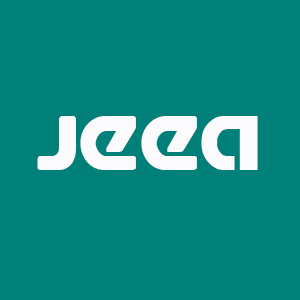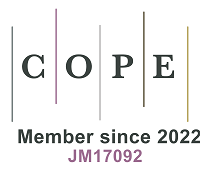REFERENCES
1. Annual report 2023. (in Swedish) Available from: https://www.brandskyddsforeningen.se/om-oss/verksamhetsberattelse/. [Last accessed on 10 Sep 2024].
2. Strandberg J, Waldetoft H, Giovanoulis G, Egelrud L, Thorsén G, Potter A. Odour and ecotoxicity in water from fuels of varying content of non-fossil components: odour threshold values, predictive modelling and ecotox data. 2022. Available from: https://www.ivl.se/english/ivl/publications/publications/odour-and-ecotoxicity-in-water-from-fuels-of-varying-content-of-non-fossil-components-odour-threshold-values-predictive-modelling-and-ecotox-data.html. [Last accessed on 7 Sep 2024].
3. ATSDR. Toxicological profile for total petroleum hydrocarbons (TPH). 1999. Available from: https://www.atsdr.cdc.gov/toxprofiles/tp123.pdf. [Last accessed on 7 Sep 2024].
4. Drivmedelslag (2011:319). (in Swedish) Available from: https://www.riksdagen.se/sv/dokument-och-lagar/dokument/svensk-forfattningssamling/drivmedelslag-2011319_sfs-2011-319/. [Last accessed on 7 Sep 2024].
5. Pires A, Han Y, Kramlich J, Garcia-Perez M. Chemical composition and fuel properties of alternative jet fuels. BioResources 2018;13:2632-57. Available from: https://bioresources.cnr.ncsu.edu/resources/chemical-composition-and-fuel-properties-of-alternative-jet-fuels/. [Last accessed on 7 Sep 2024]
6. IARC. Benzene - IARC Monographs on the Evaluation of Carcinogenic Risks to Humans. Volume 120. 2018. Available from: https://publications.iarc.fr/Book-And-Report-Series/Iarc-Monographs-On-The-Identification-Of-Carcinogenic-Hazards-To-Humans/Benzene-2018. [Last accessed on 7 Sep 2024].
7. WHO. Methyl tertiary-butyl ether (MTBE) in drinking-water. 2005. Available from: https://cdn.who.int/media/docs/default-source/wash-documents/wash-chemicals/mtbe200605.pdf?sfvrsn=a4435114_4. [Last accessed on 7 Sep 2024].
8. U.S. Environmental Protection Agency. Government response to the BP oil spill - odors from the BP Spill. 2010. Available from: https://archive.epa.gov/emergency/bpspill/web/pdf/odorfactsheet.pdf. [Last accessed on 7 Sep 2024].
9. Livsmedelsverket. LIVSFS 2022:12. Available from: https://www.livsmedelsverket.se/om-oss/lagstiftning1/gallande-lagstiftning/livsfs-202212. [Last accessed on 7 Sep 2024].
10. SEPA. Odour guidance 2010. Available from: https://www.sepa.org.uk/media/154129/odour_guidance.pdf. [Last accessed on 7 Sep 2024].
11. Laffon B, Pásaro E, Valdiglesias V. Effects of exposure to oil spills on human health: updated review. J Toxicol Environ Health B Crit Rev 2016;19:105-28.
12. Govindarajan SK, Mishra A, Kumar A. Oil spill in a marine environment: requirements following an offshore oil spill. Rud Geol Naft Zb 2021;36:1-9.
13. Gorman Ng M, Cherrie JW, Sleeuwenhoek A, et al. GuLF DREAM: a model to estimate dermal exposure among oil spill response and clean-up workers. Ann Work Expo Health 2022;66:i218-33.
14. Ehigbor MJ, Iwegbue CMA, Eguavoen OI, Tesi GO, Martincigh BS. Occurrence, sources and ecological and human health risks of polycyclic aromatic hydrocarbons in soils from some functional areas of the Nigerian megacity, Lagos. Environ Geochem Health 2020;42:2895-923.
15. Eklund RL, Knapp LC, Sandifer PA, Colwell RC. Oil spills and human health: contributions of the gulf of Mexico research initiative. Geohealth 2019;3:391-406.
16. Drivmedel 2020. ISBN978-91-7993-039-4. Eskilstuna, Sweden. (in Swedish) Available from: https://energimyndigheten.a-w2m.se/System/TemplateView.aspx?p=Arkitektkopia&id=ab21d64a1cd74d0f8dec7bbcd96aaf2e&view=693&q=drivmedel. [Last accessed on 10 Sep 2024].
17. Johnson KJ, Rose-Pehrsson SL, Morris RE. Characterization of fuel blends by GC-MS and multi-way chemometric tools. Petrol Sci Technol 2006;24:1175-86. Available from: https://www.tandfonline.com/doi/citedby/10.1081/LFT-200048192?scroll=top&needAccess=true. [Last accessed on 18 Sep 2024]
18. WHO. Guidelines for drinking-water quality. 2008. Available from: https://sswm.info/sites/default/files/reference_attachments/WHO%202008.%20Guidelines%20for%20drinking%20water%20quality.pdf. [Last accessed on 7 Sep 2024].
19. Keith LH. The source of U.S. EPA’s sixteen PAH priority pollutants. Polycycl Aromat Compd 2015;35:147-60.
20. Świt P, Orzeł J, Maślanka S. Monitoring of PAHs in simulated natural and artificial fires by HPLC-DAD-FLD with the application of Multi-Component Integrated calibration method to improve quality of analytical results. Measurement 2022;196:111242.
21. Swedish Institute for Standards (SIS). Soil, sludge, treated biowaste and waste - determination of polycyclic aromatic hydrocarbons (PAH) by gas chromatography (GC) and high performance liquid chromatography (HPLC). 2022. Available from: https://www.se.byggsystem.kemi.sis.se/en/produkter/chemical-technology/analytical-chemistry/physicochemical-methods-of-analysis/ss-en-175032022/. [Last accessed on 7 Sep 2024].
22. Swedish Institute for Standards (SIS). Water quality - Determination of the threshold odour number (TON) and threshold flavour number (TFN). Available from: https://www.sis.se/en/produkter/environment-health-protection-safety/water-quality/drinking-water/ssen16222006/. [Last accessed on 7 Sep 2024].
23. Alberta Health. Odour thresholds in emergency management. 2020. Available from: https://open.alberta.ca/dataset/e08a5b0d-1e4d-41d3-88de-a0808d08f501/resource/707256d0-6681-4cc2-b798-cd1775f12330/download/health-odour-thresholds-in-emergency-management-jurisdictional-review.pdf. [Last accessed on 7 Sep 2024].
24. Danish Environmental Protection Agency. Industrial odour control. Environmental Guidelines No. 9, 2002. Available from: https://mma.gob.cl/wp-content/uploads/2017/06/Environmental-Guidelines-9-2002-Industrial-Odour-control-ONUK2651.pdf. [Last accessed on 7 Sep 2024].
25. OECD guidelines for the testing of chemicals, Section 2. Test No. 201: Freshwater alga and cyanobacteria, growth inhibition test. Available from: https://www.oecd-ilibrary.org/environment/test-no-201-alga-growth-inhibition-test_9789264069923-en. [Last accessed on 7 Sep 2024].
26. ISO 11348-3:2007. Water quality - Determination of the inhibitory effect of water samples on the light emission of Vibrio fischeri (Luminescent bacteria test). Available from: https://www.iso.org/standard/40518.html. [Last accessed on 7 Sep 2024].
27. EPA. Methods for measuring the acute toxicity of effluents and receiving waters to freshwater and marine organisms. Fifth edition, 2002. Available from: https://www.epa.gov/sites/default/files/2015-08/documents/acute-freshwater-and-marine-wet-manual_2002.pdf. [Last accessed on 7 Sep 2024].
28. Slob W, Setzer RW. Shape and steepness of toxicological dose-response relationships of continuous endpoints. Crit Rev Toxicol 2014;44:270-97.
29. ISO 7827:2010. Water quality - Evaluation of the “ready”, “ultimate” aerobic biodegradability of organic compounds in an aqueous medium - Method by analysis of dissolved organic carbon (DOC). Available from: https://www.iso.org/standard/46248.html. [Last accessed on 7 Sep 2024].
30. ISO 8192:2007. Water quality - Test for inhibition of oxygen consumption by activated sludge for carbonaceous and ammonium oxidation. Available from: https://www.iso.org/standard/37369.html. [Last accessed on 7 Sep 2024].
31. Harrell FE Jr. Regression modeling strategies - With applications to linear models, logistic and ordinal regression, and survival analysis. 2015. Available from: https://link.springer.com/book/10.1007/978-3-319-19425-7. [Last accessed on 7 Sep 2024].







